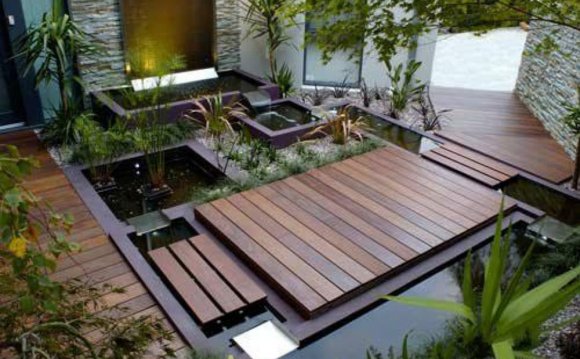
 TREES
TREES
- Princeton Sentry® — “This is worthy of a courtyard in an ancient temple.”
- Prunus serrulata ‘Amanogawa’ — “Washington, D.C., and cherry blossoms go together.”
- Hamamelis x intermedia — “Any and all cultivars of witch hazel. I never met one I didn’t like.”
SHRUBS
- Camellia japonica — “Who can resist? And why would you try?”
- Daphne x transatlantica — “Fragrance is most noticeable in a small garden.”
- Fothergilla gardenii — “Spring flowers, fall color and reliable performance.”
- Sarcococca hookeriana var. humilis — “No one ever figures out where the fragrance is coming from.”
PERENNIALS
- Polygonatum odoratum ‘Variegatum’ — “A three-season perennial.”
- Arisaema spp. — “A wonderful surprise. I always sneak in a few of these.”
- Dicentra spectabilis 'Gold Heart' — “This is definitely not your grandmother’s bleeding heart. An electric beacon for a shady spot.”
“I knew the space needed strong lines to contain the chaos of my perennial beds. I trial a lot of plants before using them in a client’s garden, so I’m constantly replanting. I also needed a space that was flexible and that would look good because I like to entertain a lot, ” he says. Construction was “challenging, ” but as Morrow explains, his approach breaks down into simple steps:
- Start with the house
One of Morrow’s goals was an area for outdoor entertaining next to the house—but he did not want the existing architecture to dictate the design. His 1890s Victorian house, although pretty from the street, is just a “brick box” at the back. Morrow’s response was to cover it with wisteria, and, like a theatrical backdrop, the leafy curtain strikes the right note against the wrought-iron furniture and weathered stone on the patio. - Design for flexibility
Morrow’s constantly changing lineup of perennials could prove distracting. To counteract this he designed a layout with a strongly defined hardscape in stone and gravel and a backbone of permanent plants that provides all-year interest. - Make the walls go away
A favorite trick Morrow came across for disguising a limited space was the “disappearing boundary.” Wooden board fences 7 feet high enclose the garden on three sides; to make them recede from view he painted them high-gloss black. Clients always refuse to believe this is a good idea until they visit the garden, then they grasp how effective it is. Not seeing is believing. (RELATED: Creating a Dramatic Backdrop) - Be ruthless
The lawn was briskly shown the door. “I don’t find lawns practical in a small urban garden, ” says Morrow. “The amount of time, energy, chemicals and machinery it takes to keep a lawn looking nice would reap far more eye candy invested in a luscious perennial bed or even in an Edward Scissorhands topiary garden.” - Wrong tree, wrong place
“I had to remove three large It nearly killed me, ” confesses Morrow. “They should have never been planted there to begin with. Southern magnolias are wonderful trees from a distance, but you don’t want to live under one. I left a fourth that was far enough from the house to work into the design.” - Be decorative
Having survived the painful but necessary surgery to achieve a workable layout, Morrow turned to furnishings. “The settees I chose are from Mike Reid Weeks. Iron furniture is a good choice for small gardens because visually it is light and airy, ” he explains. - Inject variety
Seasonal pots play an important role in this garden. Morrow uses single specimen plants in smaller pots (less than 18 inches in diameter) and exuberant mixtures of annuals and summer exotics (bananas, palms, agaves and coleus) in larger ones. In the winter, evergreen shrubs take over the containers.
Source: www.gardendesign.com















